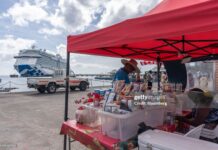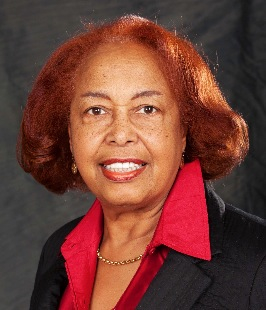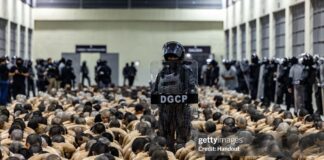By NAN News Editor
News Americas, NEW YORK, NY, Fri. Mar. 23, 2018: There is no denying that Caribbean immigrant women and those born in the US of Caribbean parents, have, and continue to make, significant contributions and strides across the country. Here are 6 Caribbean American women who have made history in these United States:
Patricia Bath
Patricia Era Bath was born in the Harlem neighborhood of Manhattan, New York City) to a Trinidad immigrant father and an African American mother. Raised in Harlem, Bath struggled with sexism, racism, and poverty though she was encouraged academically by her parents. With the help of a microscope set she was given as a young child, Bath knew she had a love for math and science. She attended the Charles Evans Hughes High School where she excelled at such a rapid pace causing her to get a diploma in just two and a half years and move on to becoming an American ophthalmologist, inventor, and academic. She has broken ground for women and African Americans in a number of areas. Prior to Bath, no woman had served on the staff of the Jules Stein Eye Institute, headed a post-graduate training program in ophthalmology, or been elected to the honorary staff of the UCLA Medical Center (an honor bestowed on her after her retirement).
Before Bath, no black person had served as a resident in ophthalmology at New York University and no black woman had ever served on staff as a surgeon at the UCLA Medical Center. Bath is the first African-American woman doctor to receive a patent for a medical purpose. The holder of four patents, she also founded the company of the American Institute for the Prevention of Blindness in Washington, D.C.
Audre Lorde
Audre Lorde, was a Caribbean American writer, feminist, womanist, librarian, and civil rights activist. Lorde was born in NYC to a Barbadian father and a Grenadian mother. As a child, Lorde struggled with communication, and came to appreciate the power of poetry as a form of expression. She attended Hunter College High School, a secondary school for intellectually gifted students, and graduated in 1951. It was at Hunter that Lorde published her first poem in Seventeen magazine after her school’s literary journal rejected it for being inappropriate.
Lorde attended Hunter and Colombia and went on to publish poems regularly during the 1960s – in Langston Hughes’ 1962 New Negro Poets, USA; in several foreign anthologies; and in black literary magazines. In 1968, she published The First Cities, her first volume of poems. Three volumes later, by 1973, she was nominated for the National Book Award.
From 1991 until her death, she was the New York State Poet Laureate and in 1992, she received the Bill Whitehead Award for Lifetime Achievement from Publishing Triangle. In 2001, Publishing Triangle instituted the Audre Lorde Award to honour works of lesbian poetry.
Lorde died of liver cancer at age 58 on November 17, 1992, in St. Croix, where she had been living with Gloria I. Joseph.
Paule Marshall
Paule Marshall is an American author, best known for her 1959 novel Brown Girl, Brownstones. In 1992, at the age of 63, Marshall was awarded a Macarthur Fellowship Grant.
Marshall was born Valenza Pauline Burke in Brooklyn to Adriana Viola Clement Burke and Sam Burke. Marshall’s father had migrated from Barbados to New York in 1919 and during her childhood, deserted the family to join a quasi-religious cult, leaving his wife to raise their children by herself.
Smitten with the poet Paul Laurence Dunbar, she changed her given name from Pauline to Paule (with a silent e) when she was 12 or 13. Marshall attended Girls’ High School in Bedstuy and subsequently enrolled in Hunter College with plans of becoming a social worker. She took ill during college and took a year off, during which time she decided to major in English Literature, eventually earning her Bachelor of Arts at Brooklyn College in 1953 and her master’s degree at Hunter College in 1955. After graduating college, Marshall wrote for Our World, the acclaimed nationally distributed magazine edited for African-American readers, which she credited with teaching her discipline in writing and eventually aiding her in writing her first novel, Brown Girl, Brownstones.
She received a Guggenheim Fellowship in 1960 and the following year published Soul Clap Hands and Sing, a collection of four novellas that won her the National Institute of Arts Award. In 1965, she was chosen by Langston Hughes to accompany him on a State Department-sponsored world tour, on which they both read their work, which was a boon to her career. She subsequently published the novels The Chosen Place, the Timeless People (1969), which the New York Times Book Review called “one of the four or five most impressive novels ever written by a black American”, and Praisesong for the Widow (1983), the latter winning the Before Columbus Foundation American Book Award in 1984.
Marshall has taught at Virginia Commonwealth University, the University of California, Berkeley, the Iowa Writers’ Workshop, and Yale University before holding the Helen Gould Sheppard Chair of Literature and Culture at New York University. She is a MacArthur Fellow and is a past winner of the Dos Passos Prize for Literature.
In 1993 she received an honorary L.H.D. from Bates College. Now retired, she lives in Richmond, Virginia. . She was designated as a Literary Lion by the New York Public Library in 1994. Marshall was inducted into the Celebrity Path at the Brooklyn Botanic Garden in 2001. In 2010, Paule Marshall won a Lifetime Achievement Award from the Anisfield-Wolf Book Awards.
June Jordan
June Millicent Jordan was a Caribbean-American poet, essayist, teacher, and activist.
She was born the only child of Jamaican immigrant parents, Granville Ivanhoe and Mildred Maud Jordan, in Harlem, New York. Her father worked as a postal worker for the USPS and her mother as a part-time nurse. When Jordan was five, the family moved to the Bedford-Stuyvesant area of Brooklyn, New York. While life in the Jordan household was often turbulent, Jordan credits her father with passing on his love of literature, and she began writing her own poetry at the age of seven.
After attending Brooklyn’s Midwood High School for a year, Jordan enrolled in Northfield Mount Hermon School, an elite preparatory school in New England. Throughout her education Jordan became “completely immersed in a white universe” by attending predominantly white schools. However, she was also able to construct and develop her identity as a black American and a writer. In 1953, Jordan graduated from high school and enrolled at Barnard College.
Jordan died of breast cancer at her home in Berkeley, California, aged 65. Shortly before her death, she completed Some of Us Did Not Die, her seventh collection of political essays (and 27th book), which was published posthumously.
The June Jordan School for Equity, or JJSE (formerly known as the Small School for Equity) in San Francisco, was named after her in 2004 by the first ninth grade class who selected her through a democratic process of research, debate, and voting. A conference room is also named after her in the University of California, Berkeley’s Eshleman Hall, which is used by the Associated Students of the University of California.
Claudia Jones
Claudia Jones, née Claudia Vera Cumberbatch, was a Trinidad-born journalist and activist. As a child she migrated with her family to the US, where she became a political activist and black nationalist through Communism, using the false name Jones as “self-protective disinformation.”
Despite being academically bright, classed as an immigrant woman she was severely limited in her career choices, and so instead of going to college Jones began working in a laundry, and subsequently found other retail work in Harlem. During this time she joined a drama group, and began to write a column called “Claudia Comments” for a Harlem journal.
In 1936, trying to find organizations supporting the Scottsboro Boys, she joined the Young Communist League USA. In 1937 she joined the editorial staff of the Daily Worker, rising by 1938 to become editor of the Weekly Review. After the Young Communist League became American Youth for Democracy during World War II, Jones became editor of its monthly journal, Spotlight. After the war, Jones became executive secretary of the Women’s National Commission, secretary for the Women’s Commission of the Communist Party USA (CPUSA), and in 1952 took the same position at the National Peace Council. In 1953, she took over the editorship of Negro Affairs.
As a result of her political activities, she was deported in 1955 and subsequently resided in the United Kingdom. She founded Britain’s first major black newspaper, The West Indian Gazette (WIG), in 1958.
Jessie Waddell-Compton
Trinidad-born immigrant, Jessie Waddell Compton, is credited as the true founder of West Indian carnival in the U.S. In the 1920s, Waddell and some of her West Indian friends started the Carnival in Harlem by staging costume parties in large enclosed places like the Savoy, Renaissance and Audubon Ballrooms due to the cold wintry weather of February. She was part of the first committee, The Trinidad Carnival Pageant Committee, that helped to organize the first ever street parade in Harlem. The earliest known Carnival street parade was held on September 1, 1947. The first Carnival Queen was Miss Dorothy Godfrey. The committee raised funds to finance the parade through ads sold in their souvenir journal.










